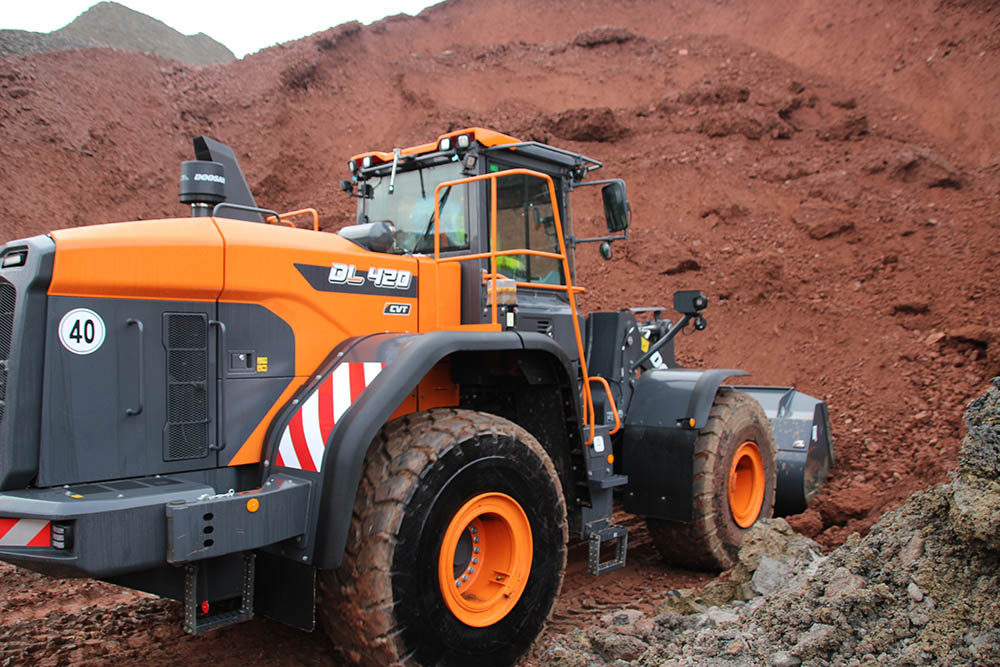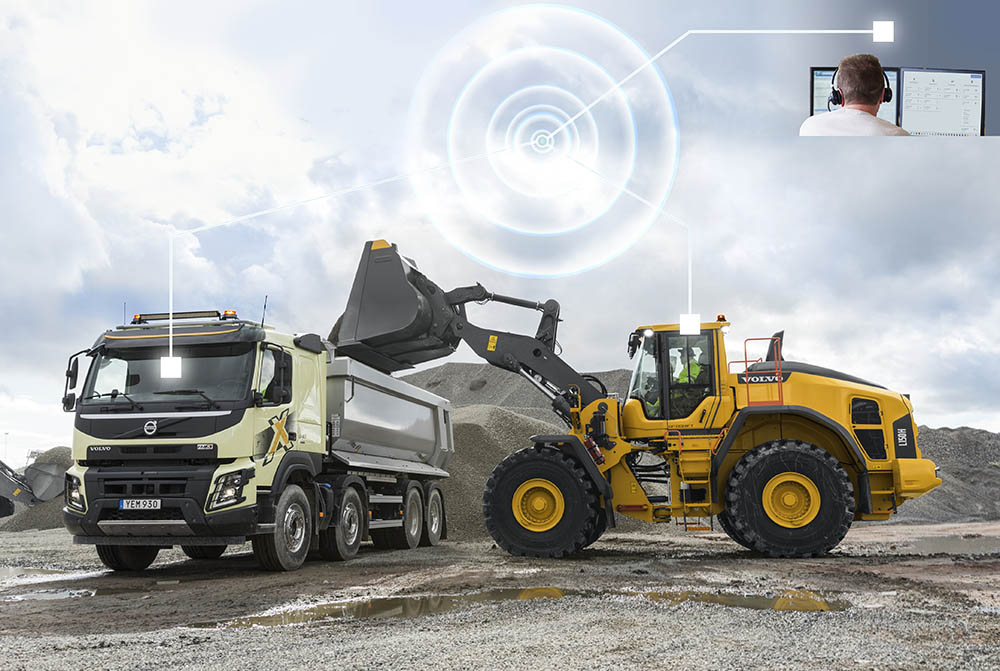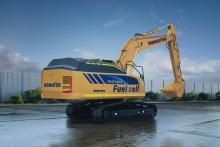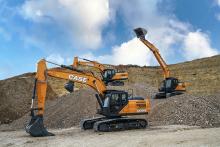
Komatsu has developed a new concept medium-sized hydraulic excavator powered by a hydrogen fuel cell.
The Japanese quarrying and construction manufacturer says that by advancing the PoC (Proof of Concept) tests it started in May 2023, it has accelerated its efforts to embark on the commercial production of medium-sized and large construction equipment powered by hydrogen fuel cells in the near future.
In its mid-term management plan, Komatsu committed to minimising environmental impact throughout its business, targeting a 50% reduction in CO2 emissions from using its products and production of its equipment by 2030 (compared to 2010 levels) and a challenging target of achieving carbon neutrality by 2050. Komatsu says it has been providing customers various products, services, and solutions that reduce environmental impact, such as hybrid hydraulic excavators and electric mini excavators. The company adds that it is also engaged in research and development to provide products equipped with new power sources.
For the new concept machine, Komatsu adopted a hydrogen fuel cell system and hydrogen tank produced by Toyota Motor Corporation on Komatsu's medium-sized hydraulic excavator. In addition to Komatsu's control technology, the combination of Toyota’s hydrogen fuel cell system and Komatsu key components, Komatsu says it is working towards zero-exhaust emissions and a significant reduction in noise and vibration while delivering the same powerful digging performance and high operability as engine-driven excavators.

Medium-sized and large construction equipment require a power source with higher energy density than small construction equipment, leading to electrification with batteries. Because hydrogen has a higher energy density and can be refuelled in a shorter time than is required for recharging batteries, Komatsu has been advancing its R&D efforts as a promising electrification choice for medium-sized and large models.
The global off-highway equipment giant adds that it will continue its efforts towards commercialising medium-sized and large construction machinery equipped with hydrogen fuel cells by conducting PoC tests of this new concept machine.
August Lücking (Lücking) is a 123-year-old building-materials producer in northwest Germany. About two years ago, the company purchased a DL420CVT-5 wheeled loader from DEVELON (formerly Doosan Construction Equipment) to feed materials for the brick-production process. The purchase decision was based on trials that showed enormous fuel savings of more than 9 l/h, confirmed when the new machine began operation. As a result, when the time came for a new wheeled loader to be bought, the decision was made: the new machine should also be a DL420CVT, this time the next-generation DL420CVT-7 model.
When the purchase of the original wheeled loader was on the agenda about two years ago, a Doosan DL420CVT-5 was tested on-site in the company's brick factory. The requirements for the loading of clay for the bricks are particularly challenging. The clay has a high density and, therefore, a high weight. In addition, the material is extremely sticky and tough. A high degree of even force and heavy traction are required to penetrate the material with the shovel, especially on wet surfaces. The tyres also play a major role here. Lücking relies on special tyres whose profile is more like that of a tractor than a wheeled loader. The grooves of the tread on 'standard tyres' clog up quickly due to the greasy consistency. These difficult conditions also drive up fuel consumption.
The previous machine, a competitor's wheeled loader with a conventional converter transmission, required an average of around 23 l/h of fuel under these conditions. When the authorised signatory at Lücking, Richard Lemke, asked the wheeled loader sales manager at Develon, Marc Glesius, about the consumption to be expected under these conditions during the handover for the test operation, he cited 14 l/h, a value that Lemke found difficult to believe.
Lemke offered Glesius the following bet: "If the DL420 with the CVT transmission only consumes 14 l/h, i.e. around 10 litres less, I will buy it immediately." The rest is history. The test consumption was the targeted 14 l/h, and the wheeled loader has been in service at the company for two years.
Lemke added: "In times of enormously high fuel and energy prices, 10 l/h naturally makes an enormous difference. In the last two years, the consumption of the DL420CVT-5 has levelled off at the 14 l/h already determined in the test operation. We also did not record any unscheduled machine failures during this period. Therefore, only a Develon wheeled loader with a CVT transmission was considered when purchasing a new vehicle. We are confident that the new wheel loader can confirm these positive experiences."
One of the main factors behind low fuel consumption is the variable transmission. Glesius said: "This transmission combines the advantages of a mechanical and hydrostatic transmission and excludes the disadvantages of both systems. The variable transmission switches continuously from the hydrostatic drive to the mechanical drive as the speed increases and depending on the application-related requirements. This system's advantages include, in particular, the excellent traction that a hydrostatic transmission offers and driving over longer distances with direct mechanical transmission. It owes the fuel savings to the lower engine speed than conventional transmissions, which is necessary to achieve maximum speed and traction."
Volvo CE Connected Load Out improves jobsite efficiency
Volvo Construction Equipment (Volvo CE) has launched a digital solution to simplify the load-out process - and help customers maximise their productivity.
 Connected Load Out improves the efficiency and productivity of the load-out process by connecting the loader operator, site office and trucks. It is a digital solution for Volvo wheeled loaders with Load Assist and On-Board Weighing and Volvo excavators with Dig Assist On-Board Weighing.
Connected Load Out improves the efficiency and productivity of the load-out process by connecting the loader operator, site office and trucks. It is a digital solution for Volvo wheeled loaders with Load Assist and On-Board Weighing and Volvo excavators with Dig Assist On-Board Weighing.
It reduces administration and miscommunication by digitalising orders and load tickets, improves visibility and helps sites be more productive. A more efficient load-out process lowers fuel consumption, reducing costs and CO2 emissions. It is currently available on subscription in select markets in Europe and North America.
Cecilia Jonsson, product owner, Global Load Out Services at Volvo CE, says: “We continue to develop intelligent solutions that help our customers streamline operations and maximise efficiency.”







